One of the most powerful ways to tell a story online and convey your messages is through video.
Video production and consumption are booming, with over 50% of YouTube and Facebook videos now viewed on mobile devices.
Thanks to the explosion of Instastories and Snapchat Stories in recent years, we’ll all become creators of video in one way or another. So much so that Cisco predict that video will represent 82% of all IP traffic in 2021.
But for longevity and brand impact, you really need to consider YouTube SEO to really make your video stand out, and get noticed and found by a wider audience.
With that in mind, it’s important to know how to get your videos in front of more eyeballs, especially when users are searching for your content on Google and YouTube. This post is designed to be a fool proof guide for YouTube video optimisation, ensuring all the time you spend filming, editing and loading your videos is repaid with maximum coverage.
Step 1 – Understand How The Google & YouTube Algorithms Are Slightly Different
This is a bit of a long first step, but bear with me – all the points are important.
If you conduct a video search on Google, and then conduct the same search on YouTube, don’t be surprised to find different search results. Even though YouTube is owned by Google, they believe the results should be different. In the example below, I’ve conducted the same search on Google and YouTube for ‘dyson airwrap‘.
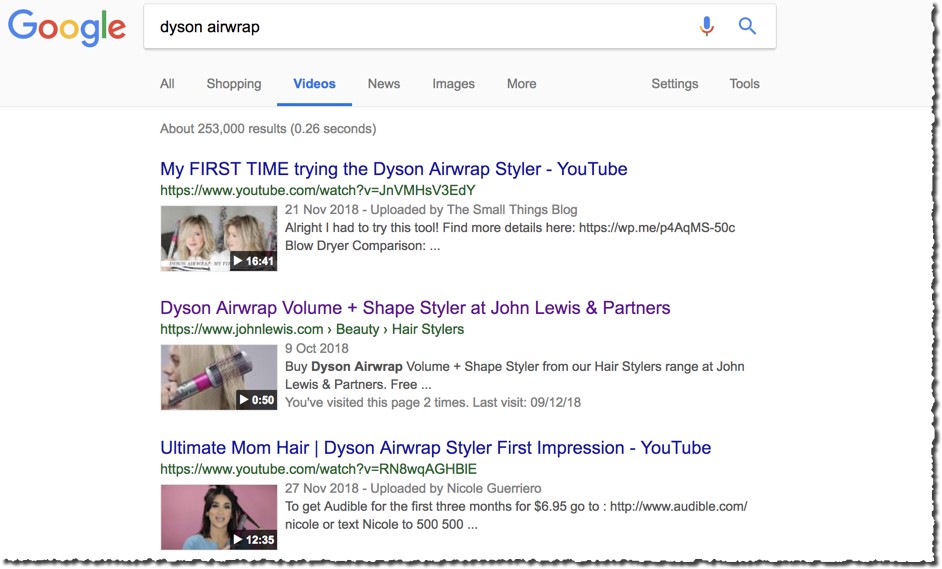
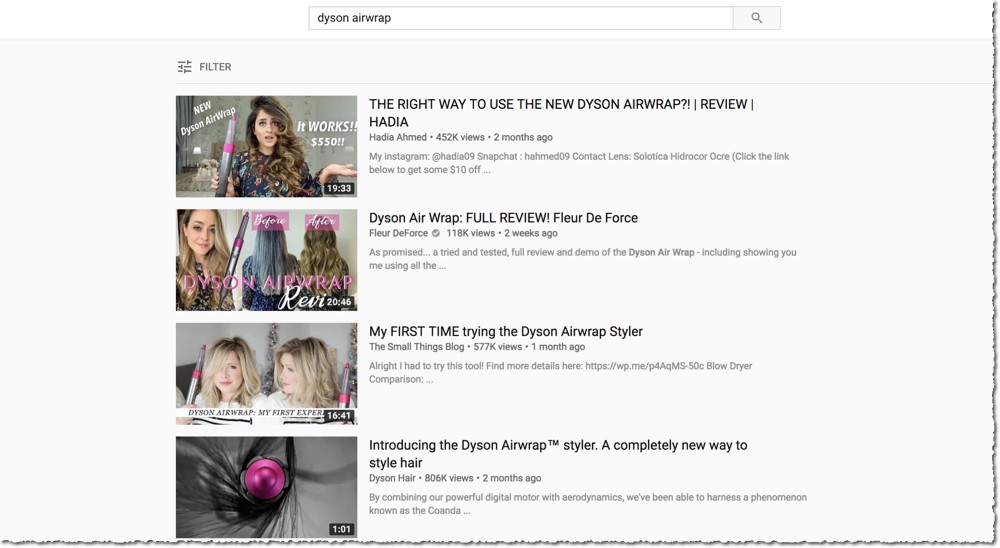
As you can see, The Small Things blog comes out top on the Google search, and Hadia Ahmed wins the ranking race on YouTube.
So why the ranking difference?
Firstly, we already know YouTube search is based on speed. Indirectly, anyway. YouTube adjusted the ranking of videos in YouTube search in 2012 to take into account “time watched”. The theory being the shorter the video, the more plays and views it will have.
But that was 6 years ago.
How audiences interact with videos has completely changed, and more often that not, video watchers are now spending more time watching video.
So much so in fact that as users, we now watch over 1 billion hours of YouTube videos a day, more than Netflix and Facebook video combined, and the average mobile viewing session lasts more than 40 minutes!
So is the ranking difference based solely on a longer watch time? Well….no. There’s more to it. Let’s take a look at both The Small Things blog video and Hadia Ahmed’s video on YouTube.
The Small Things Blog video – 577,000 views, 1 month old, 16m 41s long, 3.7k likes, 368 comments
Hadia Ahmed’s video – 452,000 views, 2 months old, 19m 33s long, 5.2k likes, 487 comments
Even though The Small Things blog video is newer, Hadia’s is shorter and has better engagement. So does engagement matter? Yes it does.
In fact view count, engagement, video quality, and everything we mention below contributes to a video’s YouTube ranking. But the primary ranking driver? Audience retention.
Audience Retention Rate As A Ranking Factor
The beginning of your video is incredibly important. You need to make it engaging and keep the viewers hooked to watch more. In fact audience retention is so important that YouTube even reports on it with the analytics in the Creator Studio.
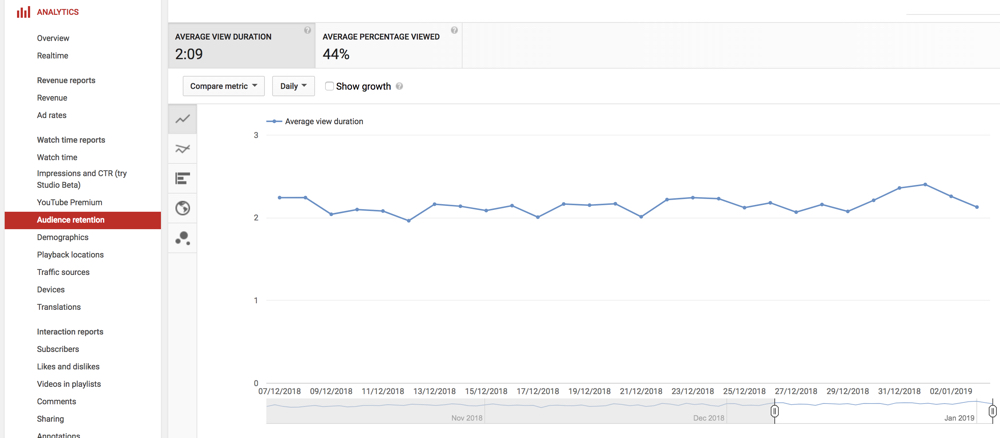
Put simply, the bigger percentage of time that your videos are watched means a better audience retention, which in Google’s eyes means your video is more engaging and better quality compared to other videos ranking for the same phrase.
Lesson one – make your video engaging at the start, and keep an eye on audience retention.
Step 2 – Research Your Keywords
Much like an SEO strategy for your website, you will need some idea of which keywords you want your video to rank for. You’ll need to find out what users are searching for, in order to get your video in front of more people’s eyes.
The first way of finding out your target keywords is to use the Google Ads Keyword Planner. Whilst you’ll have to sign up to Google Ads (if you haven’t already), you will get access to a wealth of searching data, which will be invaluable in helping craft your keyword strategy. You can find the number of average monthly searches for a given phrase under Historical Metrics.
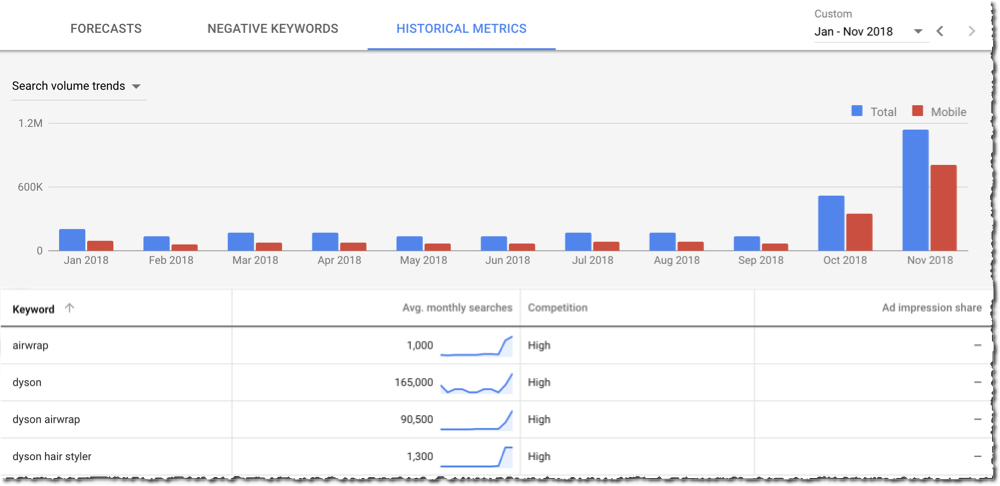
The second way of finding out the best video keywords to target is to take advantage of Google / YouTube auto complete;
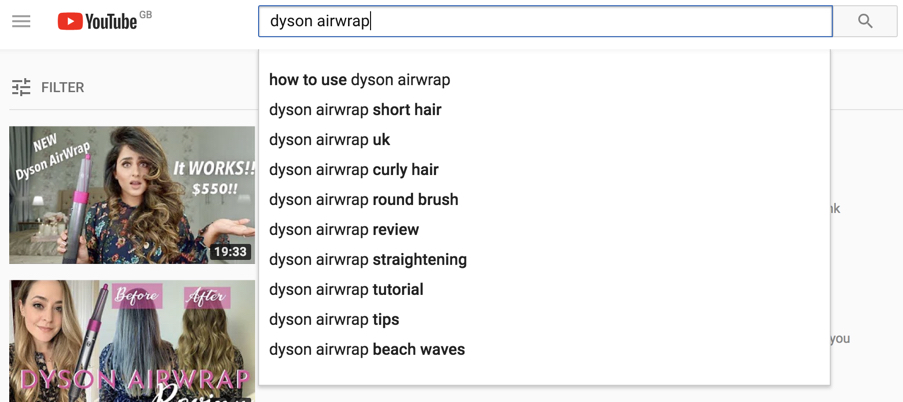
Last but not least, remember to take into consideration synonyms (or supporting keywords), and use these in your content also.
Step 3 – Optimise Your Content With Keywords & Synonyms
Once you’ve discovered which keywords you want to target, and which synonyms to use, you then need to pepper your target search terms in different parts of your video. Let’s use my Springer Spaniel puppy video as an example:
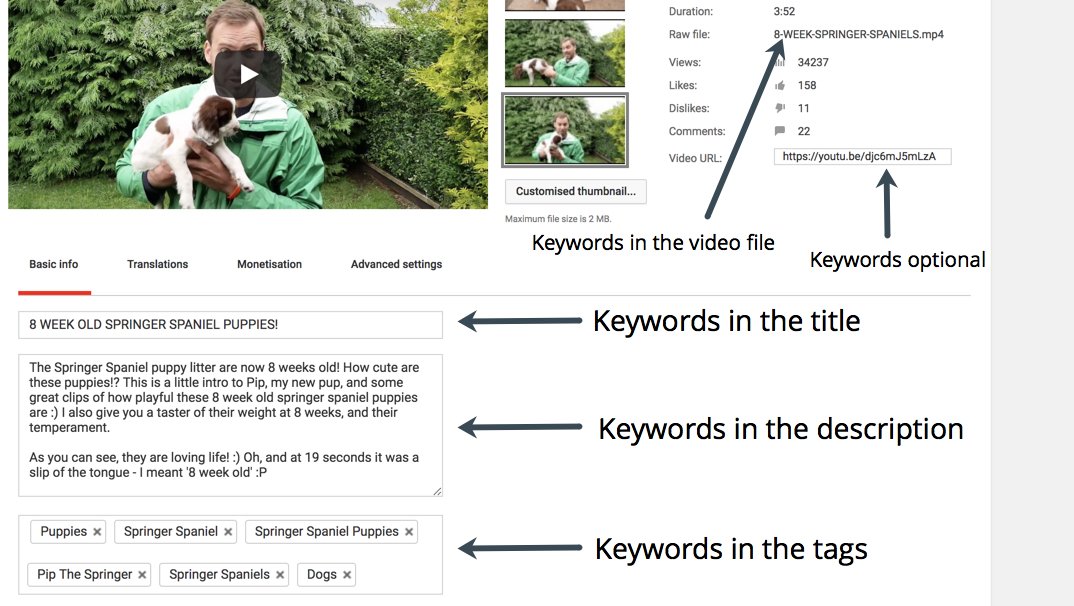
Specifically, keywords should be included in the raw video file name, the video title, video description and video tags. You can optionally add them to the video URL, but it is unconfirmed as to whether this helps the ranking of the video.
If the YouTube video is supporting content on your site or blog, add the link to the content in the video description, and add the link as a video card. Just from personal experience, this seems to help the bots connect associated, relevant content, and is a good tick in the box for ranking purposes.
The same directions apply for videos uploaded to Vimeo, Metacafe and other video platforms.
Step 4 – Optimise The Video Transcript / Closed Captions
If you’re uploading a video that has closed captions included, YouTube will automatically create a video transcript for accessibility purposes.
Unfortunately, YouTube’s voice recognition is far from accurate, so you might find if you load a video and auto-generate the subtitles the transcript contains words that don’t exist. Or you’ll find sentences that make you belly laugh.
For example, here is the first part of the transcript from Hadia’s video:

Thankfully YouTube allows you to correct the captions in the transcript, so this is another opportunity to use those keywords. Simply go to your Creative Studio, click on the video you want to edit, and select ‘Subtitles and CC’.
Step 5 – Make Google Love Your Videos Even More
As we mentioned at the start of this post, Google uses a slightly different algorithm than YouTube to rank videos in search results. Video SEO is never easy 🙂.
Google doesn’t just rely on YouTube for video results. As you can see in the Google search example above, the second ranking is being pulled from the John Lewis site, not YouTube.
If you’re using Vimeo or another host rather than YouTube, then the same steps apply. If you’re hosting the video on your own site, or embedding a video on your site, here are a few additional steps to consider.
STEP 5A – OPTIMISE THE PAGE THAT CONTAINS THE VIDEO
The same basic rules apply as regular web SEO. Use keywords in the title, meta description and header tags, as well as keyword rich, user friendly boxy text.
STEP 5B – REPURPOSE THE TRANSCRIPT
Some sites and bloggers like to post the full transcript beneath the embedded video on the site. This isn’t for everyone….especially if the video is long and contains a lot of chat, but it does help for SEO.
STEP 5C – OFFER A VIDEO EMBED CODE
If you’re creating videos for your own site, don’t be selfish – offer embed codes and allow other web users to embed your video on other sites. Many SEOs believe this helps videos rank higher, so don’t be shy, add an embed link.
STEP 5D – USE SCHEMA OR OTHER VIDEO MARK UP FOR YOUR VIDEOS
Schema mark up is supported by all the major search engines, but Google in particular has been pushing data highlighting and mark up over the last couple of years, so I would definitely recommend it.
Schema is essentially a bit of code that allows you to label and describe different elements of your content, such as ratings and reviews, pricing, and video objects.
Using schema video mark up to describe your videos will allow Google to index and show your videos in the search results. Not only that, a snippet of the video may appear in the main Google search results, giving you enhanced visibility, prominence and hence potentially increasing your click through rate.
This is exactly what is happening with the John Lewis example. Google is crawling their video, processing the information, and ranking it accordingly in the search results.
So what does this schema mark up look like? Below is an example of what Hadia’s video would look like with schema mark up (also called structured data) included:
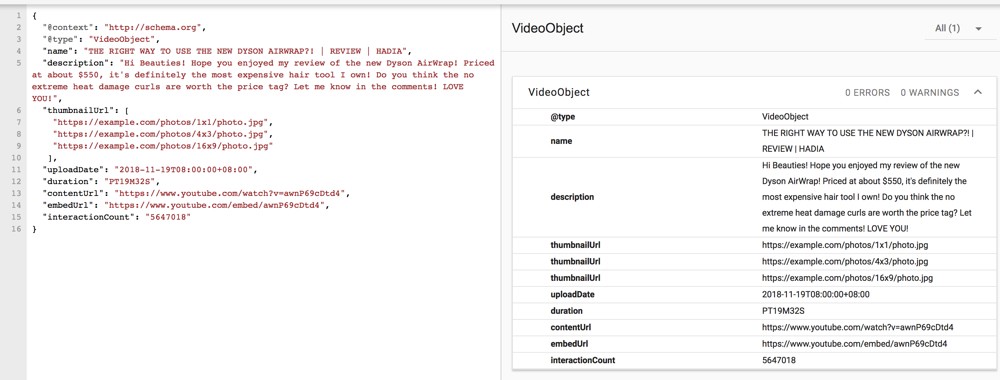
You can read how Google crawls a video at this link, and all the information you need on Google video mark up can be found here – https://support.google.com/webmasters/answer/2413309?hl=en.
If you use WordPress, there are a few plugins which offer video mark up. Schema Pro for example offers a plugin and a nice overview of video mark up.
To test your schema mark up, use Google’s Structured Data Testing Tool.
STEP 5E – SUBMIT A VIDEO SITEMAP
If you host a lot of videos on your site, it’s definitely worth submitting a video sitemap to Google. Whilst many believe using schema mark up is enough these days, there’s no harm in submitting one. Google is able to crawl videos in any of the following formats:
3g2, .3gp2, .3gp, .3gpp, .asf, .avi, .divx, .f4v, .flv, .m2v, .m3u8, .m4v, .mkv, .mov, .mp4, .mpe, .mpeg, .mpg, .ogv, .qvt, .ram, .rm, .vob, .webm, .wmv, .xap
To find out more about video sitemaps, visit this page – https://support.google.com/webmasters/answer/80471.
Step 6 – Share Your Videos On Social Media
Sharing your videos across social media platforms such as Facebook and Twitter will help you get more views, more likes and more shares. Social signals play an indirect part as a ranking factor in Google’s algorithm, so take advantage of any video love you receive.
That’s A Wrap!
Thanks for reading this very long, but hopefully useful post. Your ultimate guide to YouTube SEO and video optimisation is complete.
Good luck with your rankings, and let us know how you get on!

Leave a Comment